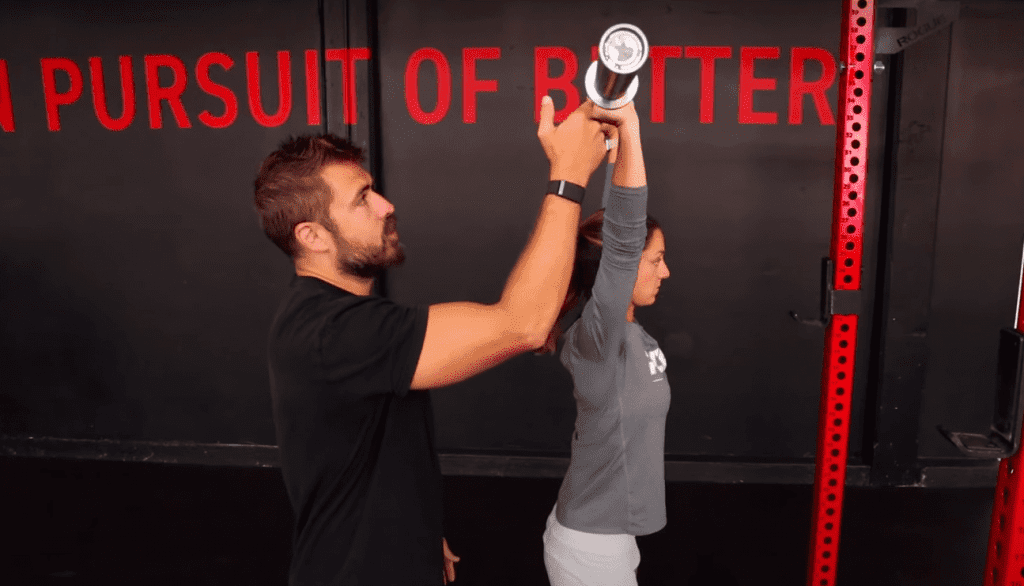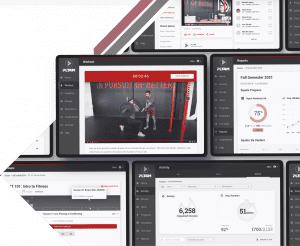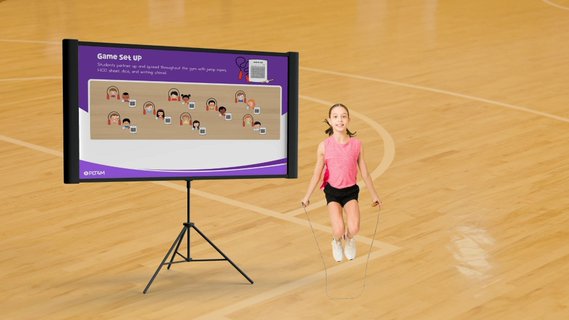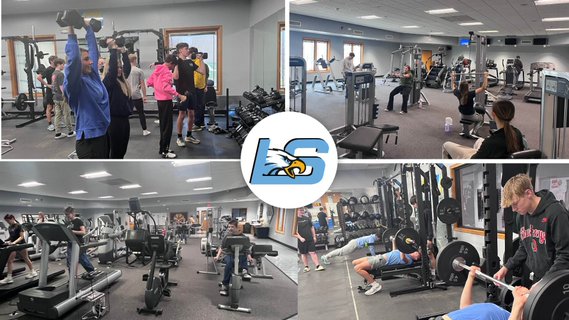The strict press is an excellent exercise for building upper body strength. However, teaching the proper form and technique required for a successful strict press can take time and effort. In this article, we’ll provide some tips and tricks to help you perfect the strict press form and get the most out of your workout routine. Read on to learn more about how to perform the strict press correctly.
The Press – Vertical & Horizontal
The “press” is a foundational human movement. But when we think about pressing exercises, we typically think about movements like the push-up and bench press (horizontal pressing exercises.)
The overhead press is an often-underutilized element of strength training for high school-aged students and athletes. There are two main reasons we see the overhead press, specifically the barbell strict press, get overlooked:
1) Danger – There is a perceived notion of danger and injury pressing weight overhead, especially a barbell. Teachers and coaches don’t want to run the “risk.”
2) Love of Bench Press – There is no other way to put it. Students and athletes love bench press, so the alarm bells start ringing when training cycles and workout routines incorporate the strict press over the bench press on a given day or week!
The fact of the matter is, though, that overhead press is not inherently dangerous on its own, and it is an extremely important aspect of balanced training. If we hope to avoid imbalances and injury, and we want to maximize athletic development, we must work in all planes of movement. Here we can review and explore strict press form in all its parts!

Quick Side Note on Overhead Pressing Terminology!
There are a lot of different press variations and names for the movement. Shoulder press, military press, standing overhead press, barbell overhead press, barbell shoulder press, push press, seated press, kneeling press, arnold press, landmine press…the list goes on and on. Some of these exercise labels are the same movement, while others offer different equipment and movement variations. This article will discuss strict press form and how it relates to the barbell traveling from shoulders to overhead.
Barbell Strict Press Form Starts With A Good Foundation
After being introduced to the press movement in general via our education on the push-up and appropriate scaling, we move on to a lightly loaded “overhead press” variation. Specifically, we are talking about the Push Press using a med ball. (This is an excellent precursor to barbell strict press form.)
Rather than keep the movement strict, and isolated to the shoulder (as we do in the push up), now we are actively involving the hips.
We do this for a number of reasons: the direct translation to other movements used in the PLT4M programs, the allowance for an introduction to dynamic “power” movement in a lightly loaded environment, and a collective effort to learn compound movements…among others. (You could start with a DB or MB strict press with beginner students and athletes if you wanted!)
To set up appropriately, the individual should hoist a med ball to the “Front Rack” position that we learned in our MB Squat.
From here, we are looking for 3 main points of performance:
1. The “Dip” – individuals should soften the knee and drop hip level slightly. We do not want any “hinge” action, though. The butt and upper back should remain in a vertical line, as if there was a wall behind the individual.
2. The “Drive” – individuals then aggressively squeeze the glutes and quads to fully open the hip (think leg drive). This makes the ball “weightless” and allows the individual to carry the ball’s moment up and overhead with a full extension press.
3. The “Lockout” – each rep should end with the individual at full extension. The ball should be positioned directly over the individual’s midline, not out in front or pulled behind. Everything should stack in one straight line from top to bottom.
Barbell Strict Press Form
While we often begin our overhead pressing with Med Balls and other lightweight instruments, the standard barbell strict press is the first true barbell variation we introduce. It is a full-body, strict-strength movement that also requires great stability and balance. Let’s explore the full points of performance and strict press form. (Again, you might call it a shoulder press, military press, or something different, but we will stick with strict press form for the sake of consistency!)
Strict Press Points of Performance
Firstly, the individual must get the bar into a slight variation of the “Front Rack” position aka our starting position. Generally speaking, this is done by setting up within a rack, with the bar set into J-Hooks at about chest height – just like we would do for a front squat, for example. It is possible, though, when the weight is light, to power clean (with excellent attention to teaching and positioning!) the bar up to the shoulders instead.
In either case, the bar should be held with a FULL grip, rather than the loose finger tip grip associated with front squatting. Elbows should still be slightly in front of the bar, but think of maintaining a roughly vertical forearm.
From here, the individual should make sure to keep the entire body “stacked” in one straight line from start to finish. What we mean is a neutral spine stacked over the hips, no kneed bend, and feet flat on the floor directly under the hips. To ensure this position, instruct the individual to squeeze the hamstrings, glutes, and core muscles throughout each rep creating a stable base. This will prevent any excessive backwards lean of the torso or neck (a very risky position to be in when moving weight and not what we want for strict press form).
Then, the individual “retracts” the head slightly as he or she initiates the upward press with the shoulders and arms only. The bar path travels straight up, staying over the midline until it is locked overhead – still directly over the middle of the individual’s feet.
We return the bar the exact same way in reverse order with complete control.
Check out this full introduction on strict press form and execution of the lift.
Common Faults of Strict Press Form
While we just reviewed proper strict press form, we know that technique and form might not always be perfect. Some common mistakes when performing any type of overhead press include:
Excessive lean of the back or neck to make room for the bar path overhead
Elbows flaring out to the sides to get weight overhead
Elbows not locked out overhead (typically, weight overhead is in front of the individuals center of gravity)
Lower body leg drive or jerking motion added to help move the weight
All of these faults in proper form typically occur when heavier weights are introduced. Therefore, at any point, we should encourage the individual to drop from heavier weights and perform the movement with proper form and technique.
Additionally, we should always be prepared for failure when performing any strength training movement. Unlike movements like the squat or bench, we cannot safely spot the overhead press. Luckily, even if proper form deteriorates or the heavier weights become to just to heavy, we can always return to the starting position. Individuals at any point can stop the bar path upwards if they hit a sticking point, return to the shoulders, and safely get the bar back into the rack. You can drop your hips to help soften the load. (Check out how to do so here.)
Ready to Learn More?
Schedule a free 10 minute consultation to see how the PLT4M system can help save you time, and empower student learning!
Key Takeaways on Strict Press Form
Upper body pressing is an integral part of any fitness program.
It ensures proper, healthy function of our shoulders, and can improve the quality of daily life or athletic endeavor alike.
While stereotypical push exercises like the Barbell Bench Press are not inherently bad, in fact they play a role in advanced training, they cannot be performed without first mastering the foundational movement pattern itself.
Learning to master something as simple as the standard push up and overhead press will go a LONG way for anyone looking to become more physically fit!
FAQ
Does PLT4M have other proper form articles for teachers and coaches?
Yes, if you found this article helpful, check out some of the other professional development blog articles PLT4M has recently released:
Does PLT4M have training programs for students and athletes?
Yes, PLT4M has an entire library of instructional videos and complete training programs. For example, our intro to strength training program introduces a movement like a barbell strict press. And future more advanced workout programs continue the skills built but with heavier weights. We also have a full slate of PE lesson plans for things like yoga, dance, bootcamp, and more!









